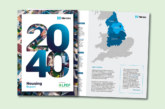
Winckworth Sherwood’s Ruby Giblin discusses social housing and corporate lending.
Deregulation, the big bang of the social housing world, has opened the door to new funding opportunities for housing associations in the free market. Funders, instead of lending to a regulated entity with a strong public service ethos, are now lending to corporate-lite entities with market-orientated priorities. With non-governmental lending to registered providers of social housing (RPs) at £77bn, is it time to take another look at lending criteria for RPs?
The increasingly corporate nature of RPs has been evolving for some time, with the commercial side of the business being ring-fenced but running alongside the core social housing function — no mean feat as three quarters of RPs are charitable. But what type of investment are funders of RPs looking for?
Funding for development programmes and working capital has historically been accessed by charging large portfolios of existing housing to secure long-term (typically 30-year) loan facilities from the main retail banks. But increasingly, RPs are turning to the public bond market and private placement initiatives as well as considering specific development funding.
Typically, loans are made to the RP parent who on-lends it to their ring-fenced commercial subsidiaries, as this is usually a cheaper option than direct development finance. However, with the changing nature of the sector, it is likely that development finance, secured on specific projects in the process of being built, and unsecured corporate-style working capital facilities will be more widely sought.
Expansion and growth
The leading RPs, predominantly led by the G15, are looking to expand the non-social housing aspects of their business. These housing providers are increasingly looking to borrow without security on covenant strength. RPs appreciate that the cost of borrowing will be higher, but ultimately overall costs will be lower as they are not paying for the cost of valuations and charging. They benefit from speedier transactions and look for greater flexibility to operate their wider business. There are also tax benefits when funding development as opposed to securing new-build units.
This, on the face of it, fits the description of a corporate loan and some RPs, such as London & Quadrant, are seeking to expand in size to rival commercial property companies. In 2017, L&Q for example, purchased a £505m land bank from Gallagher Estates, consisting of 42,000 additional units. This takes L&Q’s total unit numbers to just over 90,000 units, giving the housing provider an overall value in excess of £2.6bn. They own 998,930 sq foot of London, creeping into the top 100 of the capital’s landowners, and have ambitious plans to build 100,000 homes in the next 10 years.
The search for cheap funding goes on; the G15 have once again been out in force at MIPIM looking for overseas investment. Back home, Places for People, Home Group and Clarion are on the £2bn regeneration panel for Haringey, alongside more traditional housing developers. Many more are linking up with developers to bring forward new homes.
Perhaps with this change in attitude by many RPs to their role in housing provision the time has come for more corporate style lending arrangements?








